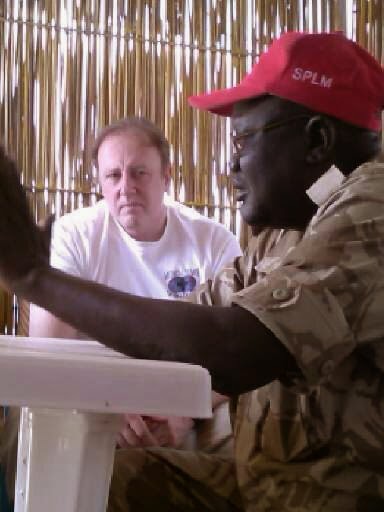Mobilization & Arrival:
By: John Jefferson
After a Few Small Miracles - Mobilization and Arrival in
Melut
First the Miracles…Having made many inquiries to people
involved in South Sudan relief and missions, in the last week of February I
decided I was eventually going to find a way in, and needed to get a visa. I sent my passport to D.C. via Fedex Monday
A.M. just so I’d have in and avoid panic during the minimum 4 or 5 day waiting
time to get it processed and sent back in case something happened sooner than
expected. Well, sooner was Tuesday when
Alan Kelley of MedteamsWorldWide contacted me about the possibility of being
able to fly in with his team as opposed to using the March 9th
flight just to get to Melut. This mean
leaving that Saturday or Sunday at the latest.
He asked if I had my passport. I
told him I sent it in Monday, but had a contact in the embassy that was trying
to help me expedite things. As it turned
out, while I was talking to Dr. Kelley the next morning, my wife texted me and
told me my passport had arrived! (36 hours after sending it in, a new
record!) I was now on a charter flight
in and out of Melut, and just had to trust God that the rest…all the rest of
the plan would fall into place.
Once in Melut, the team met with several of the local
contacts arranged by MTWW, which benefitted both missions. (Medical and food
distribution) Working from Juba, the
capitol city, Pastor John Monychol also provided references to two men of God, Pastor Daniel and Reverend
Ayat Deng, who provided me with indispensable help in arranging for
permissions, transport logistics, and foodstuffs. Pastor John made tireless efforts to
communicate with key contacts in Kodok to ensure that commissioners, officials,
pastors, and even the King of the Kao-Nyaro people of Nuba Mts knew of our
plan. From the onset, the mission’s goal
to purchase as much sorghum as possible and accompany it by land or river
toward the zone of conflict with a three-day turnaround time was met with a bit
of speculation. Working primarily with
pastors from Melut, Baliet, and Malakal (the latter two cities having been
destroyed by the recent conflict), it was easier to insist that this was God’s
plan rather than try to use any kind of logic or reason to justify such an
impractical time line. Primarily because there really was no logical or
reasonable explanation for why it would succeed given the known obstacles and
many unknowns!
We began by getting permission to undertake the task and as
well as an agreement from the rest of the team (MTWW) that it could be
supported as an integral part of the overall mission.
This integration of missions beyond just
allowing me to get a place on the plane turned out to be a critical success
factor as already pointed out.
Dr. Alan
Kelley and Tim Dillard were indispensable assets, along with the local
NGO/church partners.


























